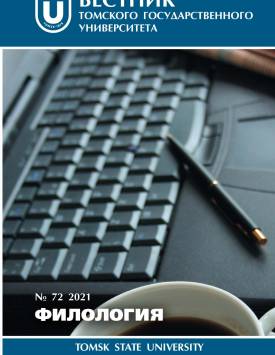Noun Phrases of the Type eine Art + Attr.+ Subst. in German (In Synchrony and Diachrony)
This article investigates the grammatical form of German two-part noun phrases of the type eine Art wissenschaftliche Rezension (‘a kind of scientific review’), composed of the “auxiliary noun” Art (‘kind’) and any noun modified by an attributive adjective (Attr.+Subst.). The semantic interpretation of those noun phrases will typically rest much more on their second part, the main carrier of descriptive meaning, than on the “auxiliary noun” Art, which takes on an auxiliary-like function. The article examines four models of noun phrases of the type eine Art +Attr. +Subst. in a corpus of literary prose from the 17th to the 20th century: (1) Aux metaph + Attr. + Subst. Genitiv; (2) Aux metaph + von + Attr. + Subst. Dativ ; (3) Aux metaph + Attr. stark + Subst. = Aux ml!taph ; (4) Aux metaph + Attr. schwach + Subst. = Aux metaph. In the texts of the 17th century, two models of the noun phrases compete: Aux metaph + Attr. + Subst. Genitiv (66%) and Aux metaph + Attr. + Subst. stark = Auxmetaph (34%). In the texts of the 18th and 19th centuries, the models Aux metaph + von + Attr. + Subst.Dativ (74%) and Auxmetaph + Attr. + Subst.Genitiv (46%) prevail respectively. In the literary prose of the first half of the 20th century, the model with the preposition von (‘of) proved to be Auxmetaph+ von + Attr. + Subst.Dativ (47%) is the most frequent. The texts of the second half of the 20th century demonstrate other author preferences. During this period, the models Auxmetaph + Attr. + Subst.Genitiv (40%) and Aux metaph + Attr. + Subst. stark = Auxmetaph (41%) are represented almost equally. The distribution of the models in present-day German proves to be controlled mainly by grammatical factors: the case of the “auxiliary noun” Art as well as the number and semantic class of the “main noun”. The model with the case ending -(e)n Auxmetaph+ Attr. schwach + Subst. = Auxmetaph is encountered in modern German only after the “auxiliary noun” Art in the dative case (“main noun” is a feminine noun) and the accusative case (“main noun” is a masculine noun). In the texts of the 19th century, the first and second halves of the 20th century, for noun phrases with feminine main nouns, the model Aux metaph + Attr. + Subst.Genitiv_ is predominantly used, while with masculine and neuter main nouns are found in the models with case agreement between the two parts of the noun phrase Aux metaph + Attr. stark + Subst. = Aux metaph and in the models with the preposition von: Auxmetaph + von + Attr. + Subst.Dativ In the texts of almost all (except the second half of the 20th century) analyzed periods, for noun phrases with the main noun in the plural, the model Aux metaph + Attr. + Subst.Genitiv was predominantly used.
Keywords
noun phrases, “auxiliary noun” Art, “main noun”, grammatical expression, variability, synchrony, diachronyAuthors
| Name | Organization | |
| Shubina Elvira L. | Moscow State Institute of International Relations (University) | elvira.shubina@mail.ru |
| Bluhdorn Hardarik | Leibniz Institute of the German Language | bluehdorn@ids-mannheim.de |
References

Noun Phrases of the Type eine Art + Attr.+ Subst. in German (In Synchrony and Diachrony) | Vestnik Tomskogo gosudarstvennogo universiteta. Filologiya – Tomsk State University Journal of Philology. 2021. № 72. DOI: 10.17223/19986645/72/9
